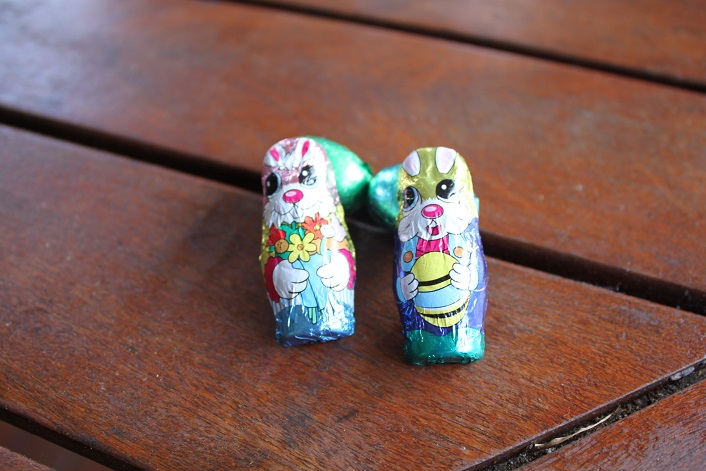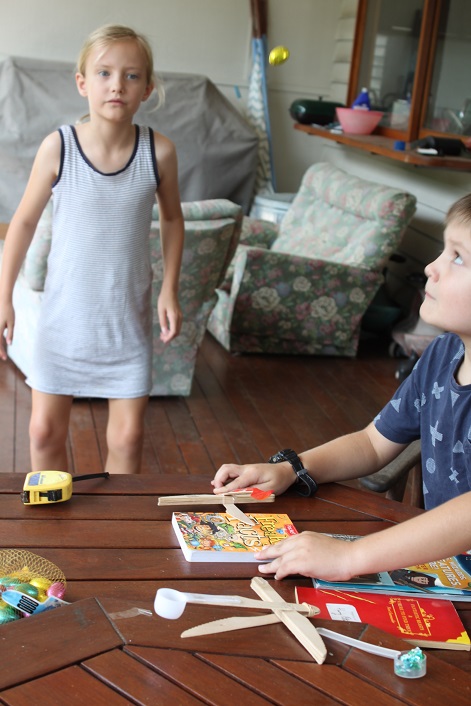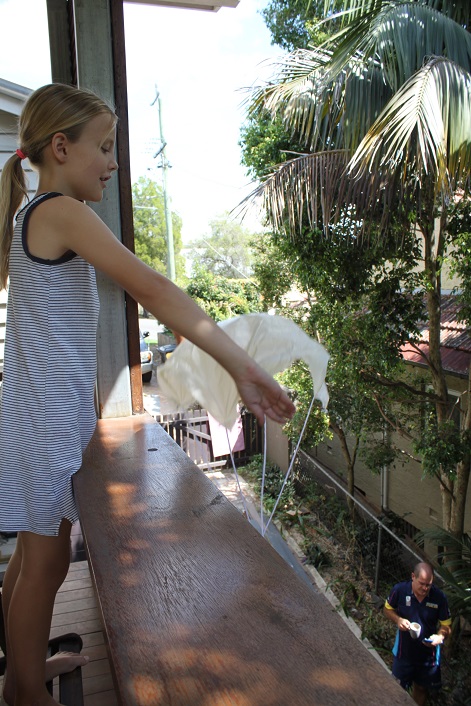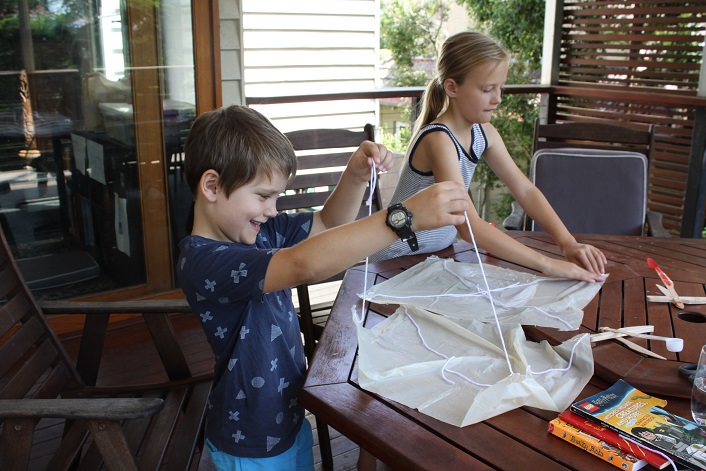Probably not. Until now.
This Easter, one of our Experimentary families has taken a couple of popular experiments from Experimentary and adapted them, Easter-style.

Catapults
Who knew that this experiment could be even more fun! Our kids love the catapult experiment because not only do you get to make your very own catapult, medieval style, but you get to ping things as far (and as high) as you can, measuring the height and distance at various angles. It’s a sneaky way for the kids to learn a bit about gravity, and previously this experiment has led to a play session where a castle is stormed by medieval knights, who use their catapults to break through castle walls or launch stuff over the top.
For Easter however, we’ve replaced the usual fodder with mini Easter eggs, which sit perfectly on the teaspoons at the end of our catapults. We’re still measuring the distance, both up and along, that they travel, but…and arguably this is the best bit…we get to eat them at the end of it.
When our guinea pigs (or should that be bunnies?) gave this variation a go, it was a bit of a warm day, so the eggs were starting to melt by the end of it. But you could get around that by sticking them in the fridge or freezer first. If you live in a cooler part of Australia it’s probably not an issue! That didn’t stop them eating their eggs when they were done (and a few more along the way).

Parachutes
We absolutely love this experiment. It’s lots of fun, involves a bit of craft, and provides a great visual spectacle. It’s also a really clear way of explaining resistance (drag) and gravity to young kids.
To “Easter-fy” this one, we simply replaced the parachute man, which in the videos is a glue stick man, with a little bunny. He was then launched from a height multiple times as we timed his descent, seeing if the timings matched our hypothesis. We also had a control bunny – this poor guy was launched without a parachute, and then immediately eaten. It really wasn’t a good day for him.
Once again, the kids got to eat the somewhat softened, and a bit bruised bunnies at the end of it all. We’d recommend using chocolate that isn’t hollow for this one, unless you are going to set up a nice soft landing for it, or don’t mind your chocolate ending up in a million pieces. If you’re about to eat it though it probably doesn’t matter!

What we learned
Chocolate melts quickly when you are handling it a lot and it is a warm day! But we did have enough time to get through both experiments before everything was a melted mess in what was quite a fun and delicious couple of hours of experimenting and playing around.
It was also a good example of how versatile the Experimentary experiments can be. Obviously, we used chocolate instead of the suggested items, but also we used bamboo knives (not sharp ones!) instead of ice block sticks for the catapults and made the parachutes half the size to suit the sized bags we had on hand.
Despite the distraction of the chocolate, the kids stayed on task and really understood the science concepts we were looking at, spending far more time working on the experiments than they would have spent with their noses in a book.
We’ll be looking for more Easter adaptations to try during the holidays as we get closer to the arrival of the Easter bunny!
If you’d like to give these, or any Experimentary activities or experiments a go, sign up for a FREE trial to get started.




